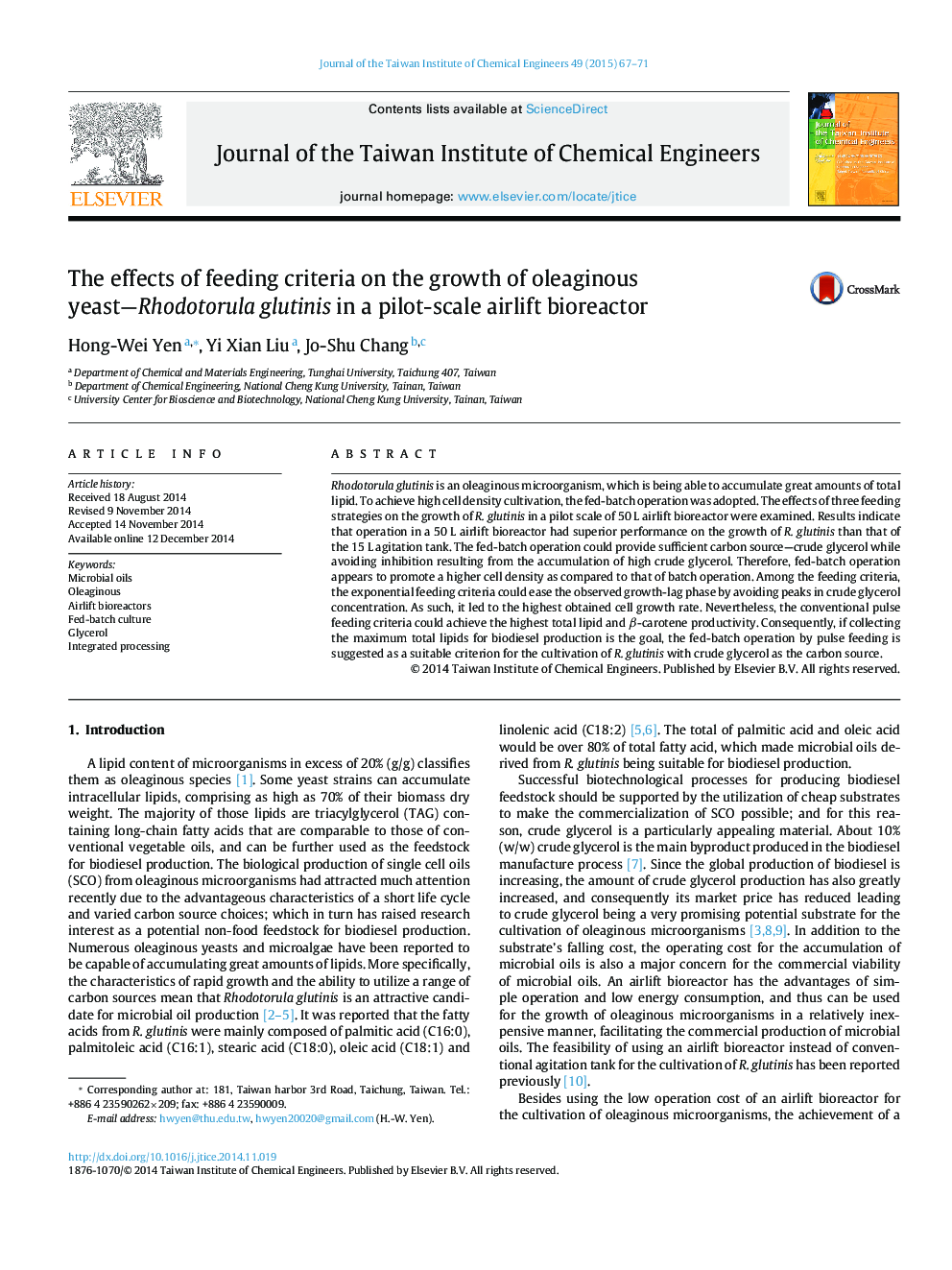| Article ID | Journal | Published Year | Pages | File Type |
|---|---|---|---|---|
| 691183 | Journal of the Taiwan Institute of Chemical Engineers | 2015 | 5 Pages |
Abstract
Rhodotorula glutinis is an oleaginous microorganism, which is being able to accumulate great amounts of total lipid. To achieve high cell density cultivation, the fed-batch operation was adopted. The effects of three feeding strategies on the growth of R. glutinis in a pilot scale of 50 L airlift bioreactor were examined. Results indicate that operation in a 50 L airlift bioreactor had superior performance on the growth of R. glutinis than that of the 15 L agitation tank. The fed-batch operation could provide sufficient carbon source-crude glycerol while avoiding inhibition resulting from the accumulation of high crude glycerol. Therefore, fed-batch operation appears to promote a higher cell density as compared to that of batch operation. Among the feeding criteria, the exponential feeding criteria could ease the observed growth-lag phase by avoiding peaks in crude glycerol concentration. As such, it led to the highest obtained cell growth rate. Nevertheless, the conventional pulse feeding criteria could achieve the highest total lipid and β-carotene productivity. Consequently, if collecting the maximum total lipids for biodiesel production is the goal, the fed-batch operation by pulse feeding is suggested as a suitable criterion for the cultivation of R. glutinis with crude glycerol as the carbon source.
Related Topics
Physical Sciences and Engineering
Chemical Engineering
Process Chemistry and Technology
Authors
Hong-Wei Yen, Yi Xian Liu, Jo-Shu Chang,
